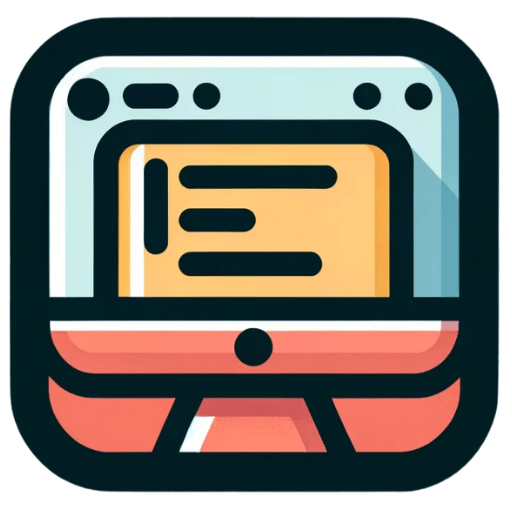How Can Design Patterns Improve User Engagement?
Design patterns have become a crucial element in enhancing user engagement across various digital platforms. This article delves into seven key design strategies that have proven to boost interaction and conversion rates, from related content cards to vertical pricing layouts. Drawing on insights from industry experts, these patterns offer practical solutions for improving user experience and driving business success in today's competitive digital landscape.
- Related Content Cards Boost Blog Engagement
- Card-Based Design Increases E-commerce Conversions
- Quick Facts Section Enhances Therapist Profiles
- Simplified Layouts Improve Website Performance
- Streamlined User Flows Boost App Interaction
- Sticky Navigation Bar Increases Mobile Conversions
- Vertical Pricing Layout Simplifies User Decisions
Related Content Cards Boost Blog Engagement
One project stands out—a client in the wellness industry had a blog-heavy site that saw decent traffic but poor engagement metrics. The bounce rate was high, and average session duration was low. After a deep dive into user behavior, we noticed that despite the quality of content, readers weren't navigating beyond the first article. The site was structured like a traditional blog roll, with minimal visual hierarchy and no clear pathways for continued reading.
We introduced a "related content card" design pattern below each blog post. Instead of basic text links, we used visual cards with post images, titles, and short excerpts. These were algorithmically chosen based on categories and user scroll behavior. The layout also prioritized mobile responsiveness and load speed.
Within six weeks, we saw a 28% increase in average session duration and a 35% lift in pages per session. More importantly, the scroll depth improved significantly, indicating that users were actually consuming more content instead of just skimming and bouncing.
Design is not just about aesthetics—it's about shaping behavior. In this case, a relatively simple change rooted in UX principles made a measurable difference.
Tip: Always test your design patterns in context; what works for one site might flop on another.

Card-Based Design Increases E-commerce Conversions
In one of my projects, I implemented a card-based design pattern for an e-commerce client struggling with low engagement. The previous layout was cluttered, making it hard for users to find products. By switching to a grid of visually consistent cards--each with a clear image, concise text, and a prominent CTA--we improved both usability and aesthetics.
The results were significant: time-on-site increased by 20%, and the conversion rate rose by 15% within a month. The success came from the design's scannability, which allowed users to quickly compare products. Additionally, we A/B tested variations (e.g., hover effects, button placement) to refine the approach further. This reinforced my belief that structured, visually digestible layouts can dramatically enhance user engagement.

Quick Facts Section Enhances Therapist Profiles
I design and develop websites for mental health, speech, and occupational therapists. The biggest improvement to user engagement has been on their therapist profiles. Each profile has the obvious: a profile picture, biography, and credentials. However, under each profile picture is a quick facts section. These sections include their services, insurances accepted, and blog posts related to or written by that therapist. There is also a call to action to request a consultation for that therapist with an indication of whether or not that therapist is accepting new patients currently. By including dynamic content and links related to each therapist, we have been able to increase engagement on their websites.

Simplified Layouts Improve Website Performance
Simpler Design
Web designers often get caught up in trying to make websites look amazing with intricate designs and functions, sometimes overlooking or forgetting the most basic principles.
I've found that a simpler design, following strong web design and SEO principles (F/Z shaped layouts and clean structure), has had a significant impact on user engagement.
I redesigned a website to have a cleaner layout following this methodology, removing unwanted text and graphics. In doing so, I increased the site's user engagement by 20% within the first two months of the change.
Another example we had was updating an engineering firm's website to have a cleaner look and remove the unnecessary content.
Following these simple principles, they saw an increase of 62% in website engagement in the three months following these updates.

Streamlined User Flows Boost App Interaction
One effective way to boost user engagement is by simplifying user flows. For example, we helped a UK-based microloan company improve their app's user experience. While the design was sleek, the registration process was too convoluted -- users were required to upload ID documents and fill out extensive contact details just to access the app, leading to high drop-off rates before registration completion.
We restructured the flow so users could access the app immediately and only submit the required information when they were ready to apply for a loan. We also added a demo button on the main screen, allowing users to explore the app without fully committing, significantly increasing trust and engagement.
The key takeaway: always conduct thorough UI/UX research to streamline processes and introduce features that encourage interaction and engagement.
Vadzim Karalchuk, Lead UX/UI Designer at Vention
Sticky Navigation Bar Increases Mobile Conversions
Absolutely--one example that stands out to me is when we added a sticky navigation bar to a client's legal services website. It may seem like a minor modification, but the repercussions were significant.
Originally, the site included a conventional top navigation bar that disappeared as users browsed. Analytics revealed high bounce rates and low conversion rates on mobile, particularly for long-form items such as service overviews and blog articles. Users were getting lost or leaving before reaching the contact CTA at the bottom.
We used a basic sticky header to keep the navigation and "Request a Callback" button accessible at all times. Almost immediately, we noticed an increase in time on page and a 28% increase in contact form submissions from mobile devices. It allowed people to act as soon as they were ready, without having to scroll all the way back up.
The lesson for me was how subtle UX patterns - those that eliminate friction - can inspire genuine engagement. It is not always about showy design; sometimes it is simply making things easy for the user at the appropriate time.

Vertical Pricing Layout Simplifies User Decisions
We changed up a SaaS product's pricing page by ditching the old grid layout and going with a simple vertical scroll instead. It made it way easier for people to compare plans without feeling like they were doing a puzzle. Right under that, we added a short FAQ section using actual questions we kept hearing from users, nothing made up, just stuff people were asking.
And then more folks clicked through to sign up, and we saw way fewer support tickets about pricing. Just goes to show, when you make things easier to understand and actually speak the way your users do, it really pays off!


